Let's take a look at how the number of different RIPE DB objects changed in the last nine years. Many of the graphs are easy to understand, but some of them are not trivial.
AS numbers
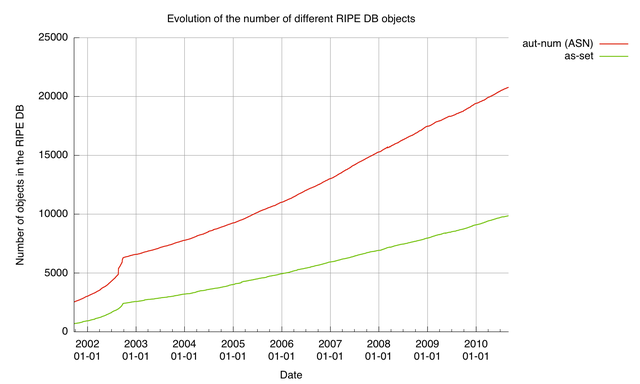
Up and to the right! The different shape until mid-2002 is most likely an artifact of our object counting methodology.

The big jump in May 2009 and the smaller one in April 2010 are due to synchronisation to and from the IANA registry and enhanced cooperation with other RIRs.
IPv4
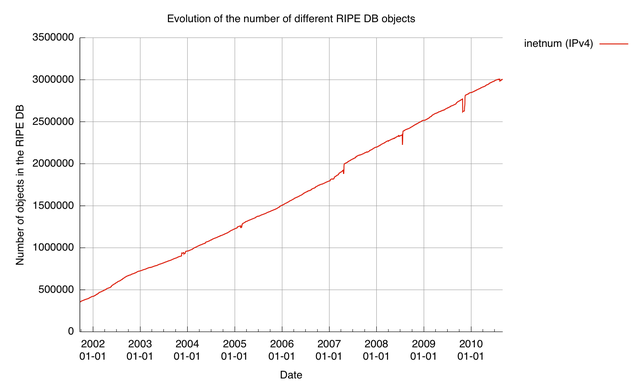
This is essentially a predictable, linear growth, so far. The occasional drops are synchronisation problems from bigger providers.
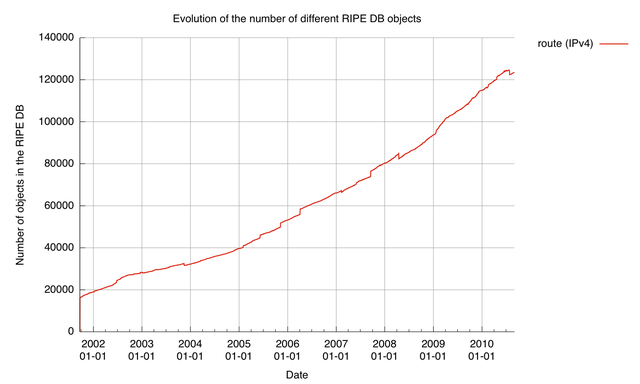
There were some the synchronisation hickups here too.

Not much we can add here...
IPv6
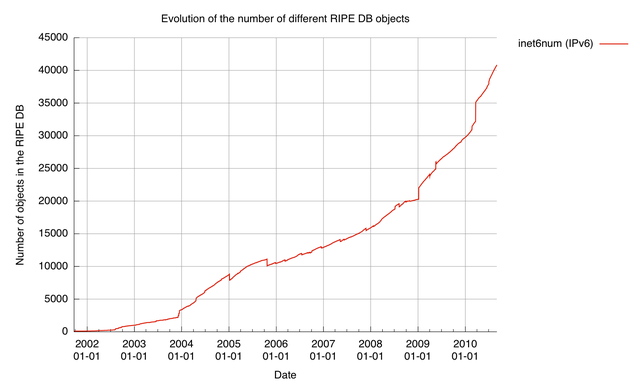
One can see some cleanups (for instance in January 2005), as well as the growth speeding up in the recent years.
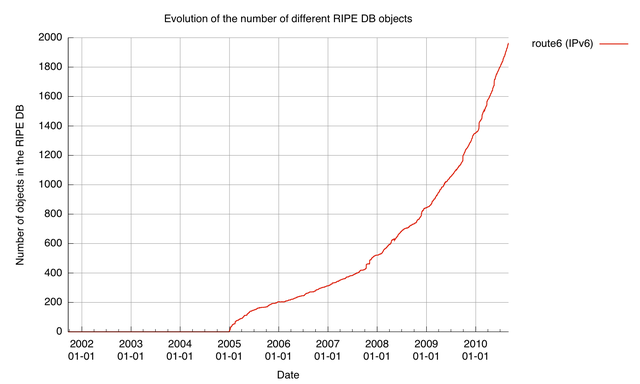
Exponential growth in the last years...
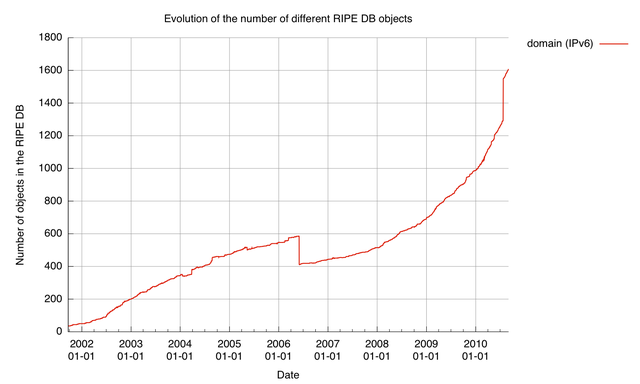
The drop in June 2006 is due to the deprecation of .ip6.int syntax, where the cleanup removed 180 domain objects. In July 2010 one ISP created ~250 reverse domain objects. Otherwise it's the same as the previous - IPv6 is taking off!
People, organisations and teams
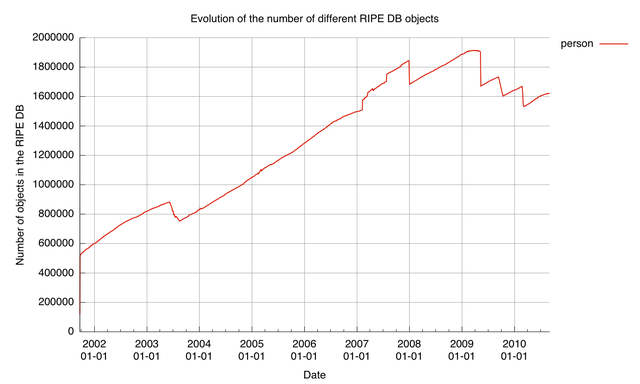
We can observe a number of interesting things here. There are a number of cleanup efforts clearly visible: mid 2003, January 2008 and regularly since mid 2009. It's interesting to see the downward curve in the first half of 2009: this marks the period where the cleanup of person objects was executed with a gradually increasing speed, while new person objects were created by our users. The result of this "fight" is the downward curve.
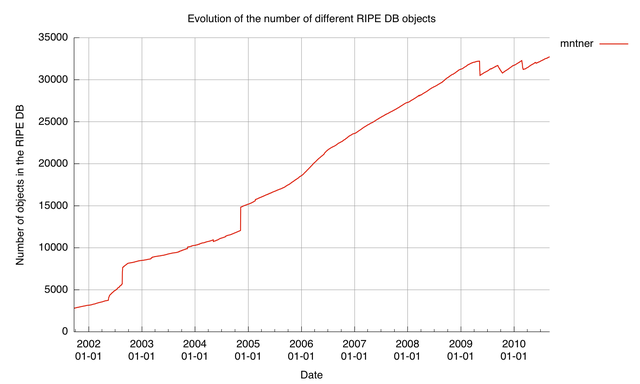
The effects of a number of cleanups are pretty obvious. In August 2002 and in November 2004 many objects were created as a result of the ERX project.
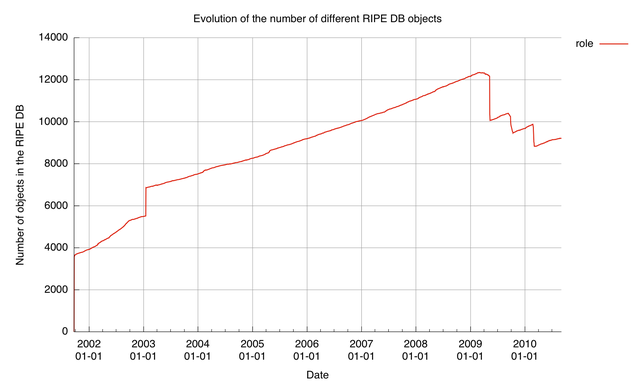
We can observe the same pattern here. The downward curve in mid 2009 is clearly noticeable. For a more detailed explanation of the jump in January 2003, please refer to Clean-up of References by Name and Other Invalid References
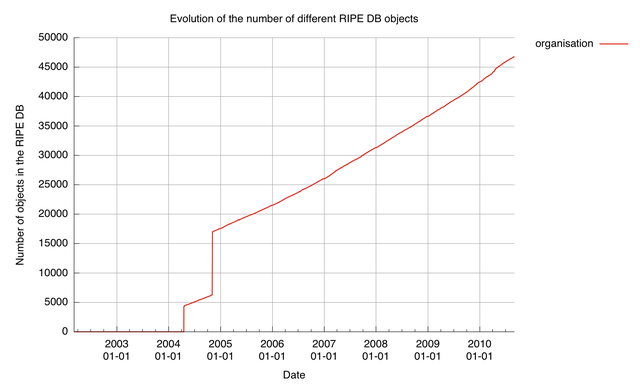
The organisation objects were first introduced in April 2004. Roughly 10.000 objects were created because of the ERX project in November 2004.
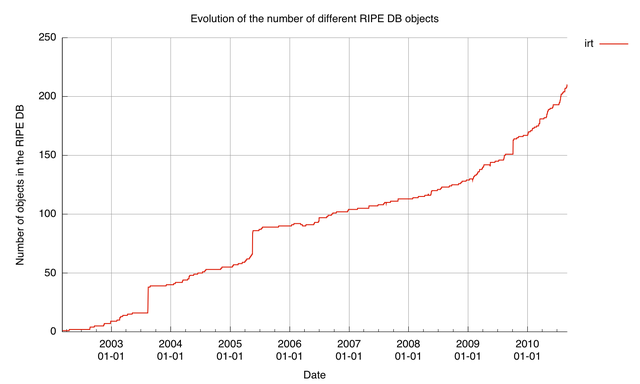
Three jumps are noticable here:
- 15 August 2003: not sure why :-)
- 18 May 2005: just after RIPE50 (Stockholm)
- 5 October 2009: RIPE59 (Lisbon)
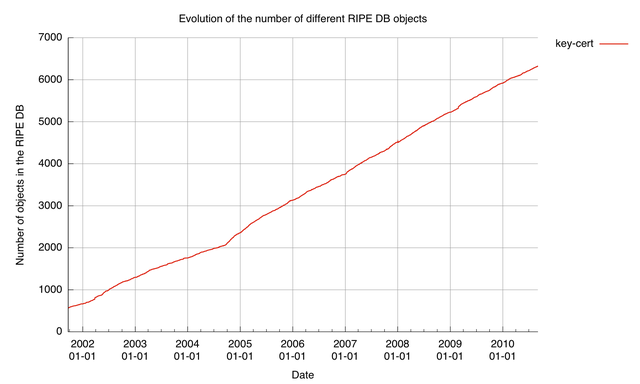
Literature
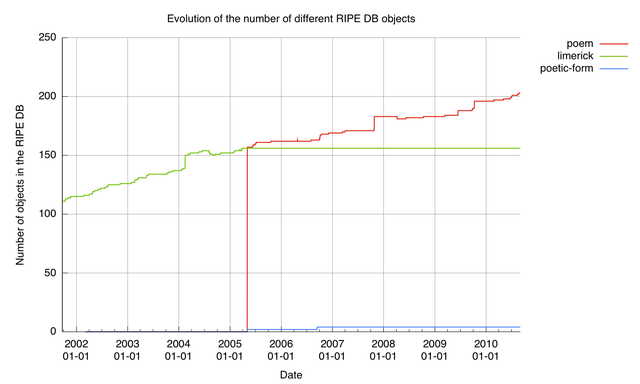
In mid 2005 the more generic "poem" form was introduced, and took over for "limerick". Limerick lies dormant ever since. We can also conclude that some people are still producing such artistic objects :-)
Other
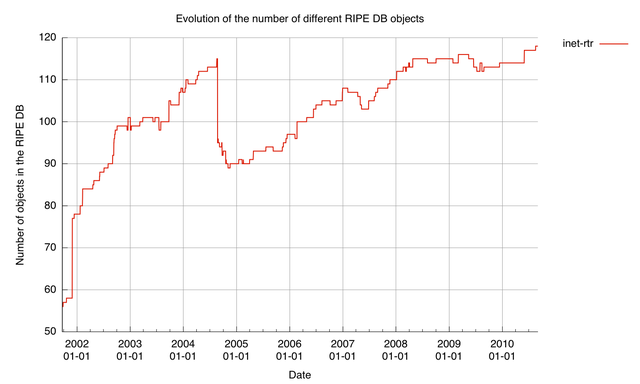
It's safe to say that the inet-rtr objects are not as popular as they were imagined to be...
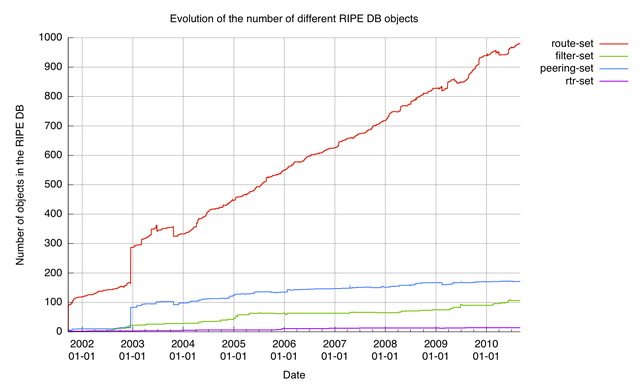
Route-sets seem to be relatively popular, but the lines for the other sets are essentially flat - almost no one produced these for a long time. One can thereby ask: how useful are these?





Comments 1
The comments section is closed for articles published more than a year ago. If you'd like to inform us of any issues, please contact us.
Anonymous •
It might be worthwhile noting that domain objects are used to configure reverse DNS, for those who are looking at the graphs and wondering.